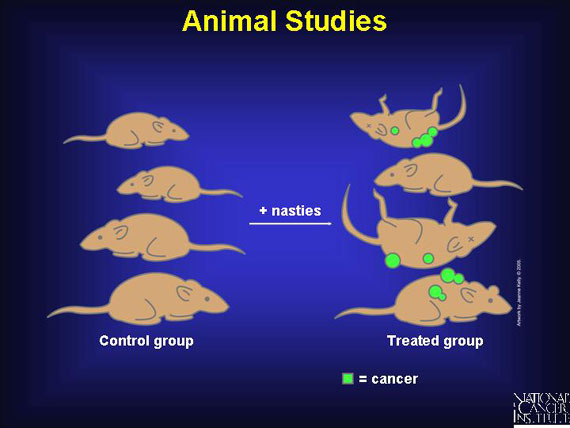|
Rodents (mice and rats) are commonly used in studies of environmental causes of cancer. They
have a relatively short lifespan (2 to 3 years), and their bodies' responses to known cancer causing
chemicals are similar to a human response. Dietary studies in rodents are more difficult,
however, due to differences in the digestive systems of rodents and humans.
In animal studies, the chemical exposures are usually at much higher levels than would be seen
with human exposure. If an extremely high level of exposure does not lead to cancer, researchers
reason that the chemical most likely does not cause cancer at lower levels either.

< Previous | Index | Next Slide > |